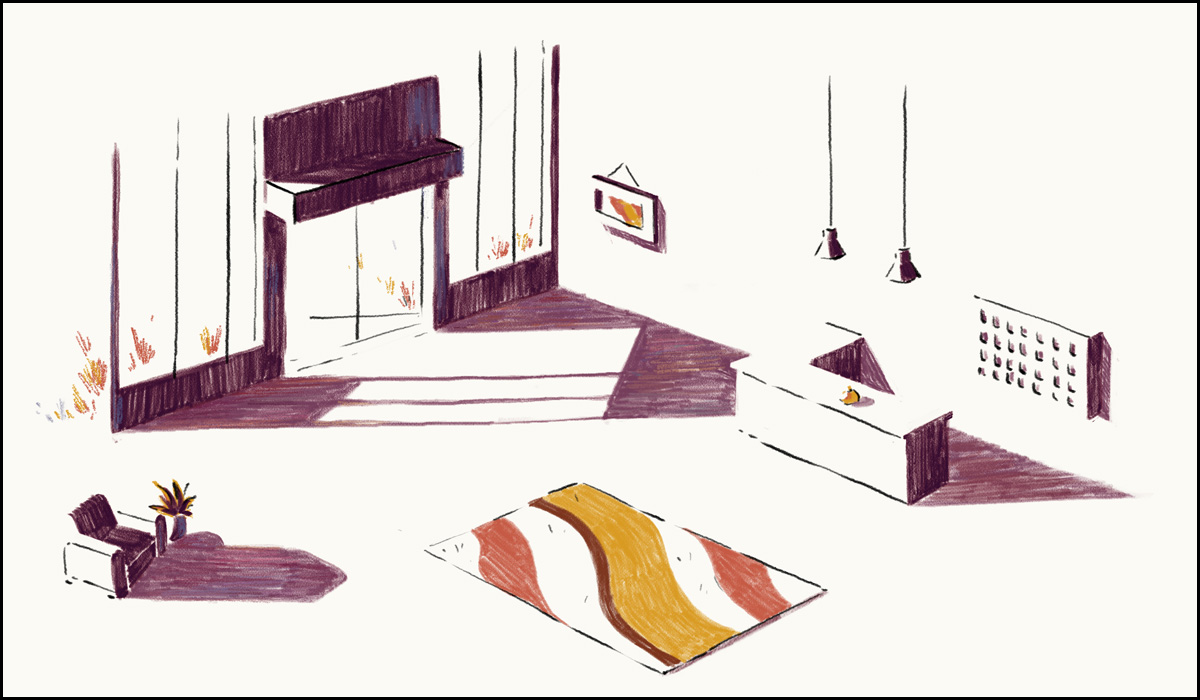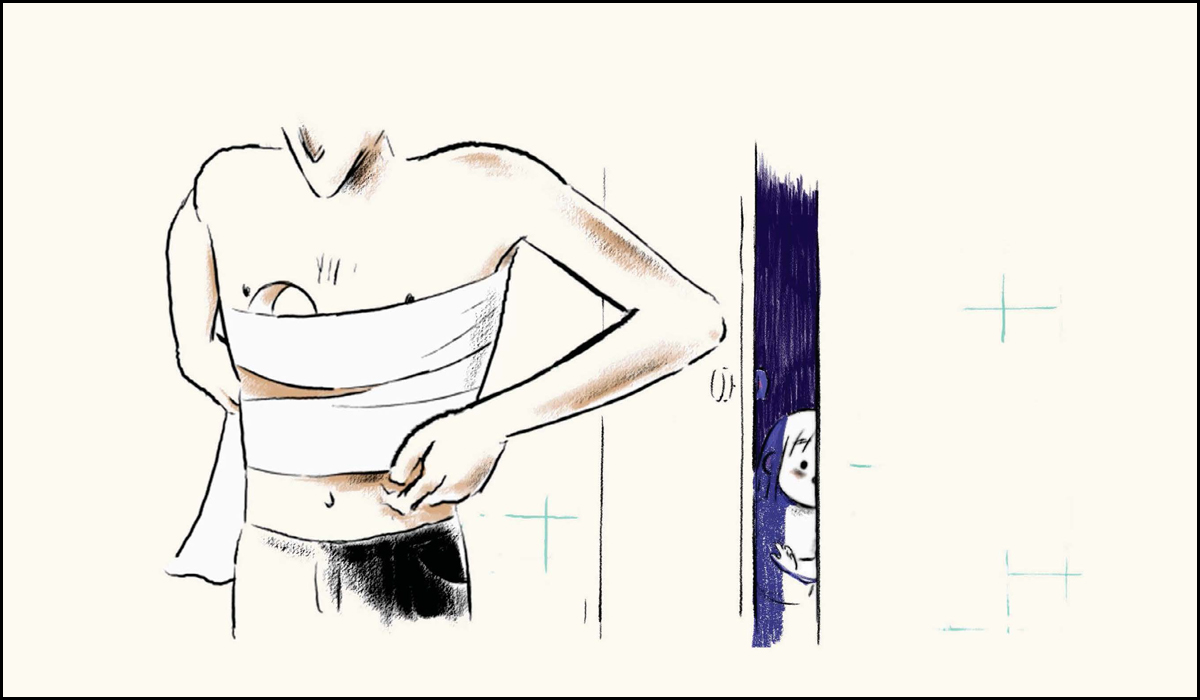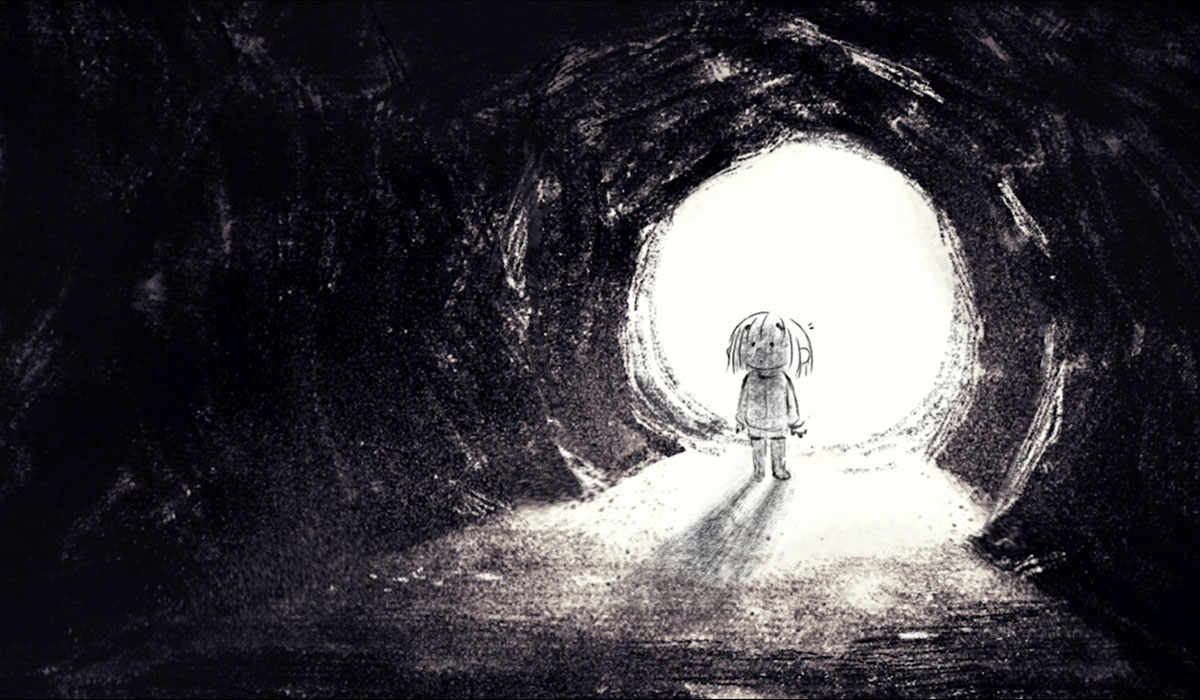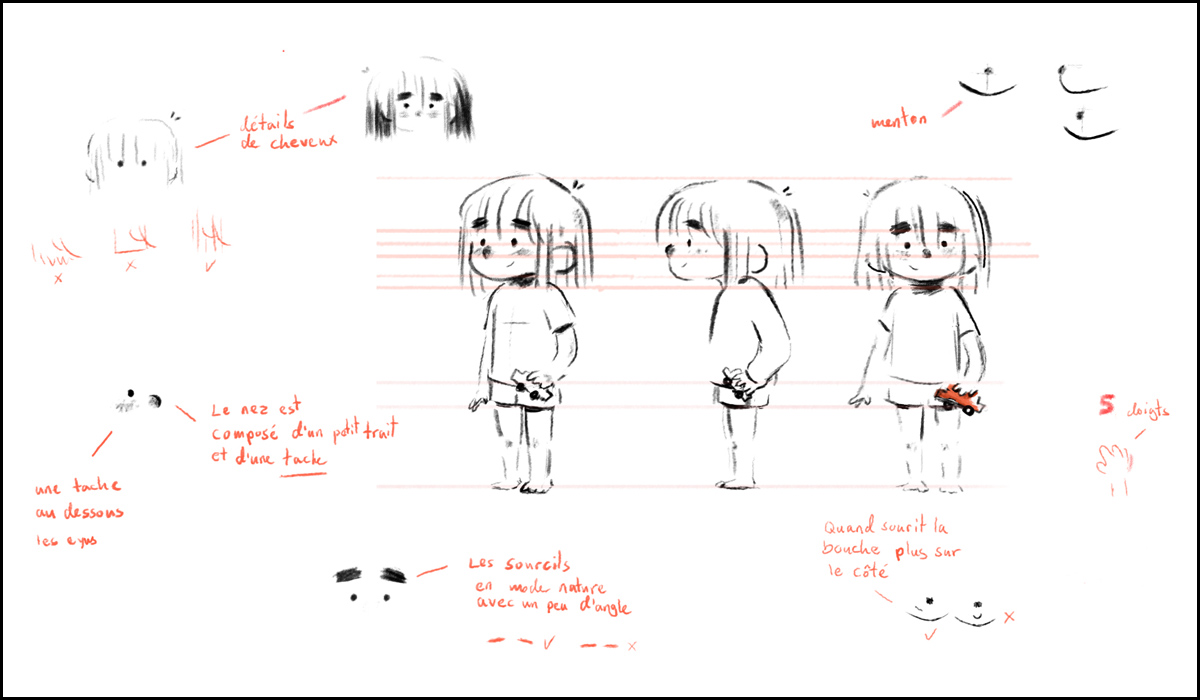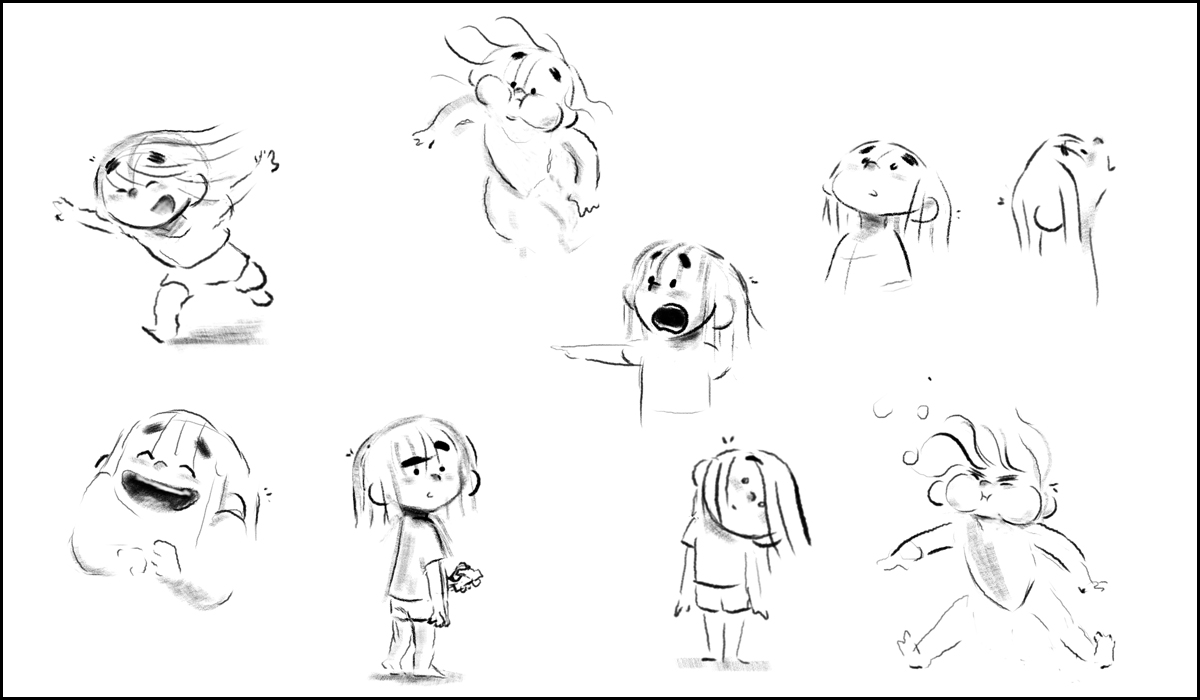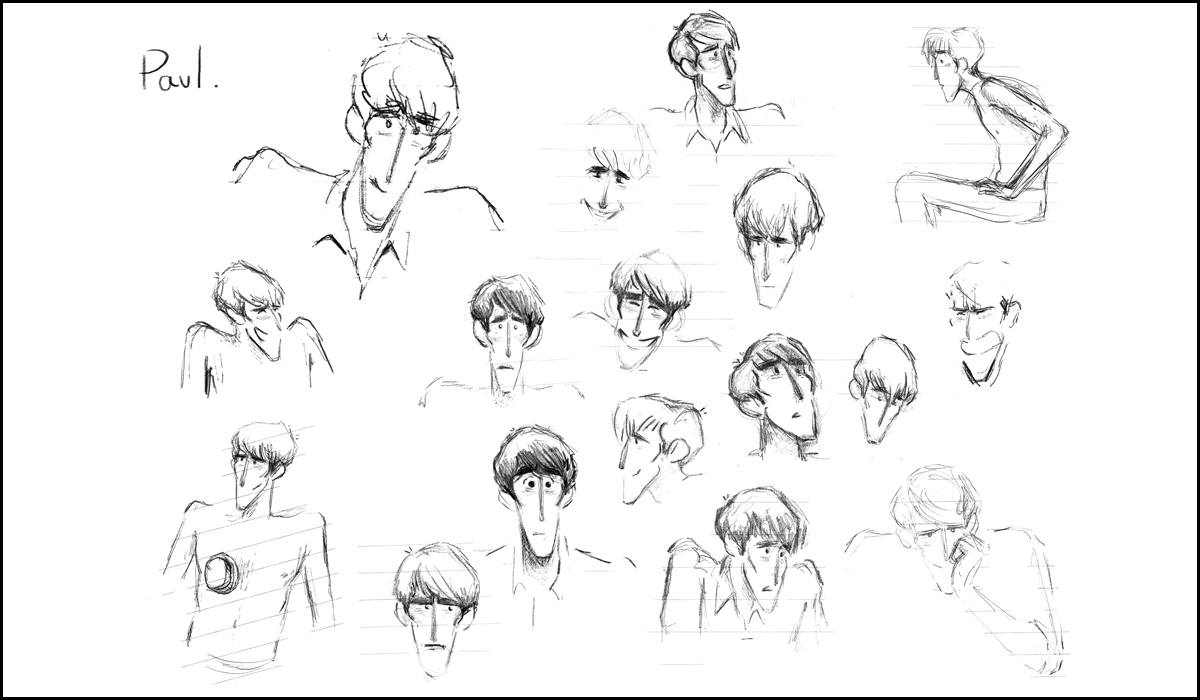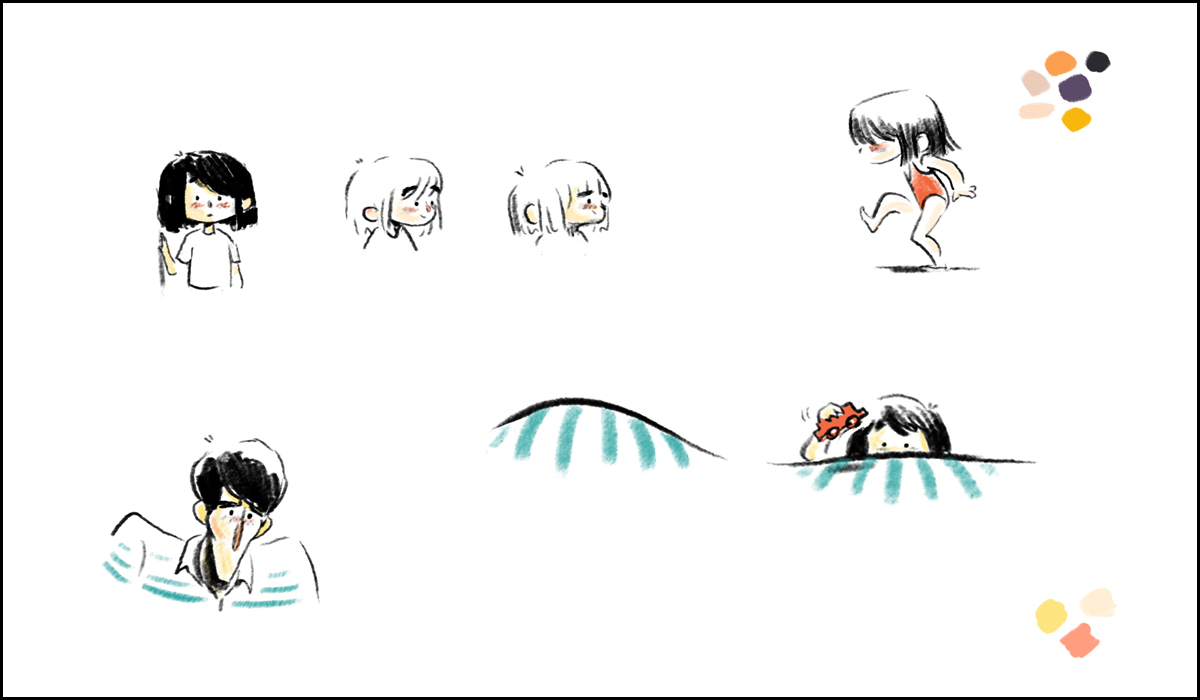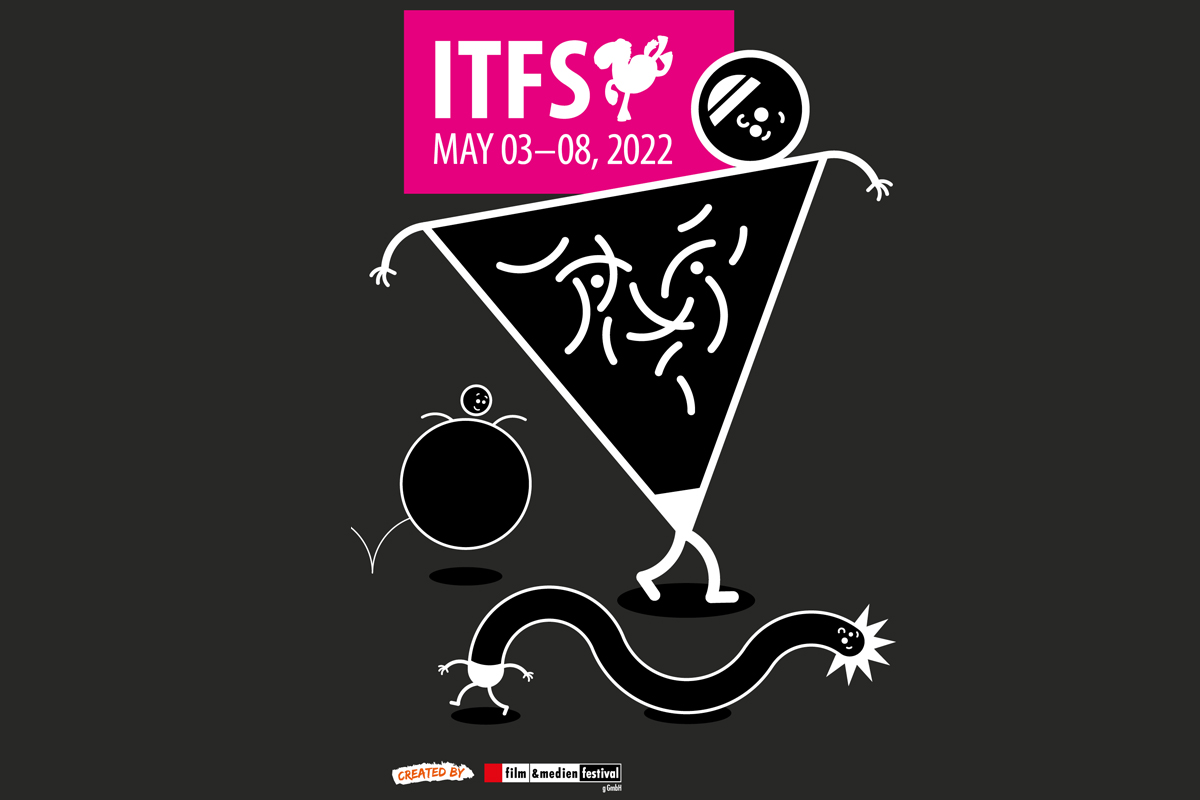Synopsis
For the first time, Tamar (5 years old) accompanies her dad in a hotel where vacationers look a bit strange… Through the eyes of the child then begins a journey tinged with surrealism. Tamar will eventually discover the hidden story of her father, a part of his life that she does not know…
Film Credit
Director: Mor Israeli
Scriptwriters: Mor Israeli and Tamar Surovich
Music: Tamar Surovich
Producers: Tamar Surovich and Jérôme Nougarolis
Productions: SU Art Productions and Cross River Productions
Techniques: Cel Animation / 2D digital
Running time: 10 min 31 s
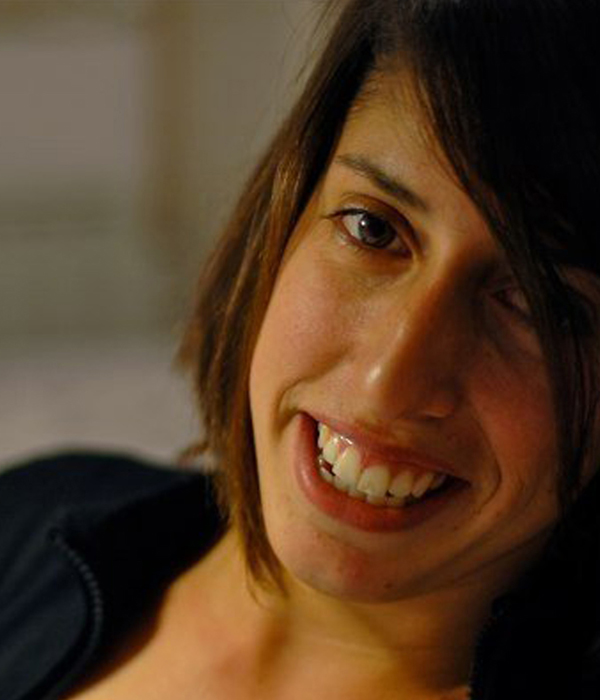
Voyage avec mon père is a 2D animated short film which tells a universal story for all ages: a cheerful and curious girl finds out her father’s shocking secret about his body, and then gradually accepts the truth.
The two main characters are modelled on Tamar Surovich, the co-scriptwriter, and her father, who was severely wounded in a war and left physically disabled. The film depicts them by richly expressing their emotions with soft lines and colors.
The film was nominated for the “International Competition” category at the 29th Stuttgart International Festival of Animated Film (ITFS).
We heard the insightful story behind the film from Mor Israeli, the director and co-scriptwriter, and Tamar Surovich, the co-scriptwriter and music composer.
Interview with Mor Israeli and Tamar Surovich
Hideki Nagaishi (HN): What was the biggest aim or purpose in developing this film and delivering it to global audiences?
Mor Israeli: When Tamar told me the story about her father Paul and the fact that he had a “hole” in his body, I immediately saw the potential of it to become a great animation film. There was something in the way she described it, still through the eyes of a little girl that felt so powerful and yet so delicate.
It started as a very small project, just to shed light on this unique story of Paul’s injury, and an opportunity to give Tamar and her family some kind of closure. The more we dived deeper into this journey, the purpose has changed: it became less private and more universal. I sensed that the subject was not disability, loss of a loved one, or even war. For me, it’s a story about a relationship between a father and a daughter. About acceptance and embracing our inner holes. It felt like a message that should be heard.
HN: Where did the initial idea of the story and characters come from?
Tamar Surovich: My father, Paul, was seriously injured during the Yom Kippur War. He became disabled, but his disability could not be seen at first sight. In my earliest childhood, I didn’t really understand why they said ” disabled “. He looked like all the other dads, and he didn’t complain about anything. 35 years after receiving his injury, and a month before his 55th birthday, he died as a result of his mutilation. Since then, I have been considered an orphan of war, and I only gradually understood why. This film helped me better understand who he was, and to better understand how this injury and our relationship have built the person I have become.
HN: What did you take care the most while writing the story of the film?
Mor Israeli: It wanted to deliver the story through the eyes of a little girl. When dealing with such a “heavy” subject that is not easy to digest, it was important for me to bring in a bit more softness and humor and keep away from realism using a surreal imagination of the girl.
Another thing that was important for me was to make it universal and not just a local film about a war or a certain reality we Israelis grew up in. I wanted to focus on a relationship based story and capture an emotion that many people from different backgrounds can relate to.
HN: How did you create the characters’ inner lives and made them authentic?
Mor Israeli: For the little girl’s character, I started to observe a lot of the children around me. The search for accuracy is essential in my work. I looked for specific gestures, I drew a lot, and with the team of animators, we did many tests for all the little things: The way Tamar tiptoes up, raises her hair, her expression when she gets angry… The accuracy also had to be found in the imaginary world of visuals and sounds invented by Tamar. I wanted the child’s point of view to feel reliable. As for the personality of this little girl, well, I did not know Tamar as a child, but I’m quite sure she hasn’t changed! I recognize in the 30-year-old woman that she is today this little girl she should be: curious, mischievous and hyper-energetic. So inevitably, with such a character, the expressions and gestures came naturally. I liked the idea of a girl who is a bit of a tomboy and is led by her curiosity. I wanted the viewers to go through a journey of discovery with her.
As for the father’s character, Paul, it was a challenge to try to express emotions of a person I’ve never met or can never really understand the trauma that he had been through. I asked Tamar a lot of questions about her dad’s personality, she told me about a very calm man, easy going, funny. It reminded me a lot of my own dad, or maybe any other dad if I had to imagine how dads are. I imagined a soft and very restrained person and at the same time very protective. I liked this duality between what you see at a first glance and then discover a stormy interior when you go deeper beyond the barriers. Furthermore, something in his drawing came quite naturally to me. It was enough to see one or two photos of him and I could already imagine the way he would react in certain situations, his body language and gestures as if I knew him before.
HN: What did you aim for or take care in when it came to the film’s music? And how was the co-creation with Tamar Surovich, the music composer for the film?
Mor Israeli: I knew from the beginning there wouldn’t be any dialogues in the film. I wanted to give more room to sound effects. However, I felt the need to add some musical notes in the film and this music could only be composed by Tamar.. I knew it would be minimal, just a few notes in the beginning and end to drive the viewers into the film and to softly float them out of it. As I wanted the music to maintain a sense of roughness, I actually recorded Tamar with my phone without her noticing and I just chose a random recording and used it for the film. I wanted to keep this authenticity.
As for the end music, we first tried to take a song that Tamar had written for her father. As the film is silent, the lyrics seemed too much. But it still lacked a voice. The voice of this grown-up little girl who now brought another point of view. Tamar therefore suggested humming the melody and lyrics to her song. We recorded it in my parents basement, you can even hear birds that sing through the window, and that naturally become an integral part of the music. There was something very emotional to me in this moment of mutual creation. It felt like the dots were finally connected, and we found the right tone.
HN: Could you please let us know briefly about the difficulties you faced during your journey in developing the film, and how you dealt with them?
Mor Israeli: Voyage avec mon père is a very intimate story for Tamar. Personally, I haven’t been faced with the injury or loss of a relative, and I have never had the chance to meet Paul, Tamar’s father. At first, I felt like it was an obstacle. In my work, I tend to create from a specific experience that I have lived, which has a specific texture and feeling, something I can relate to.
I was afraid to be disconnected emotionally from the story I’m wishing to tell. And if I’m not connected, then how will the viewers be? So I looked for a feeling that I knew, as a child. I started thinking about the way I used to look at my own father when I was little, and today, as he gets older and more fragile. Emotions and memories started to come back in snatches, to float in my head. I remembered the first time I saw my father fragile; I remembered how it tore the ground below my feet. From that moment on, I was able to be faithful to Tamar’s story while integrating a sensitive and intimate dimension that is personal to me. The film tells above all the journey of a little girl with her father, towards him. And also my own journey towards my own father. Through this story, I find myself as a child. The heroine is a bit Tamar and a bit me, too.
In terms of production, two months after starting the animation in our studio in Paris, we went for a short visit in Israel to vote in the elections when suddenly a world pandemic started and we found ourselves confined in Israel for almost 6 months! We had to change teams and find Israeli artists to collaborate with in addition to our French artists. This uncertainty eventually led to a wonderful opportunity of co-working with artists from different backgrounds, different languages, each one with their own sensitive vision and contribution to the film. It was definitely not the classic production surroundings as we know it, but it turned into an unforgettable adventure.



